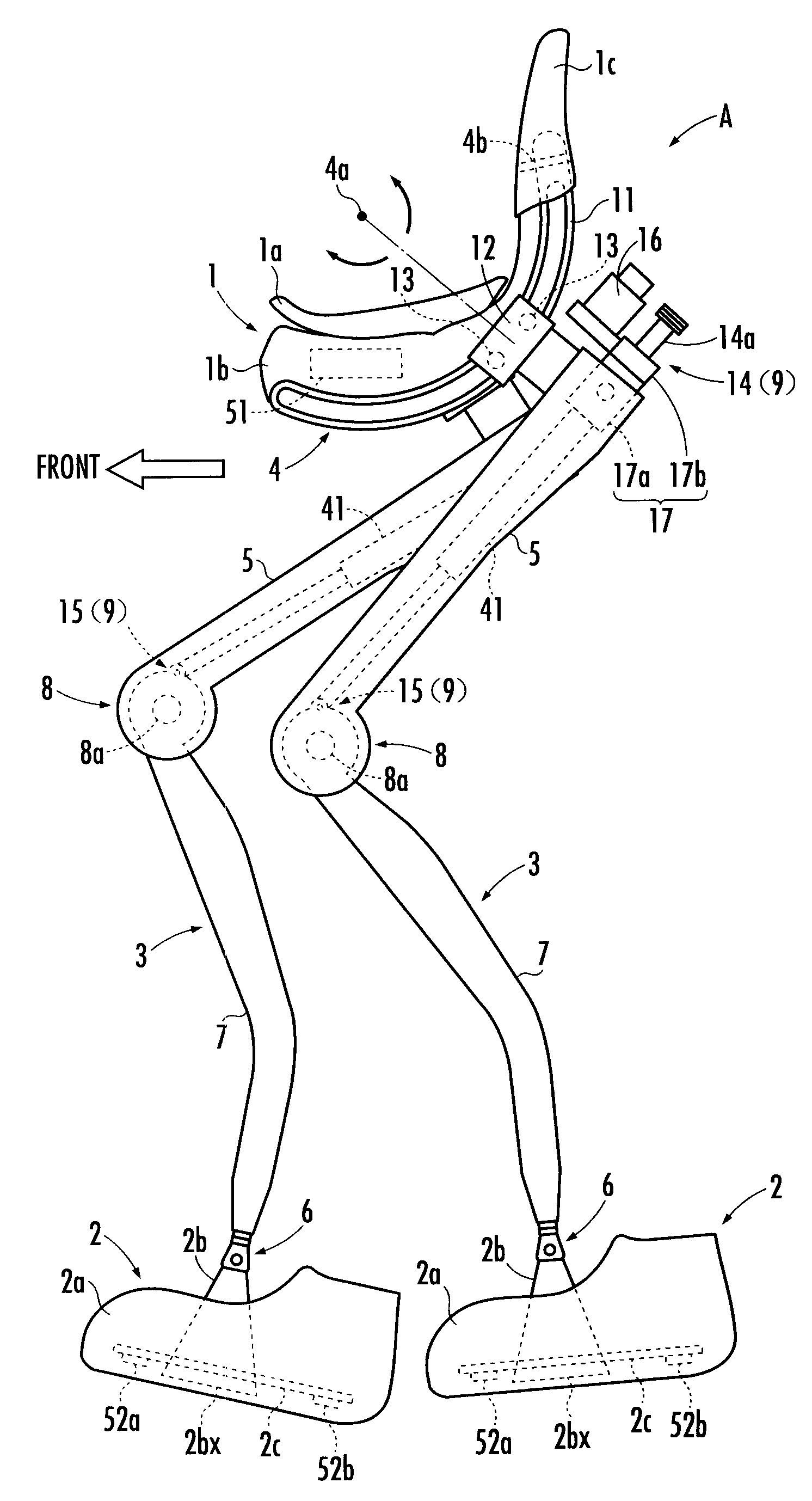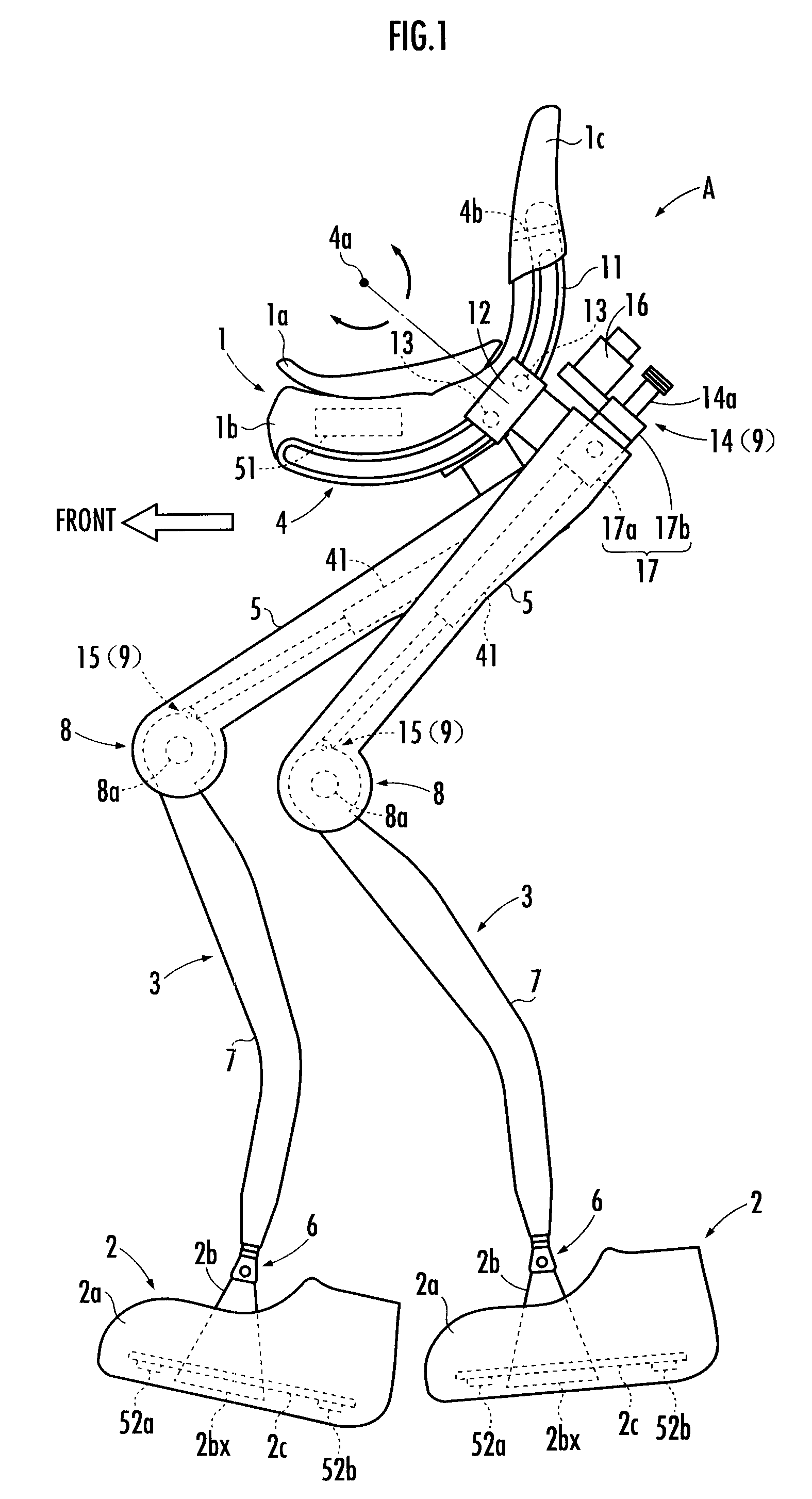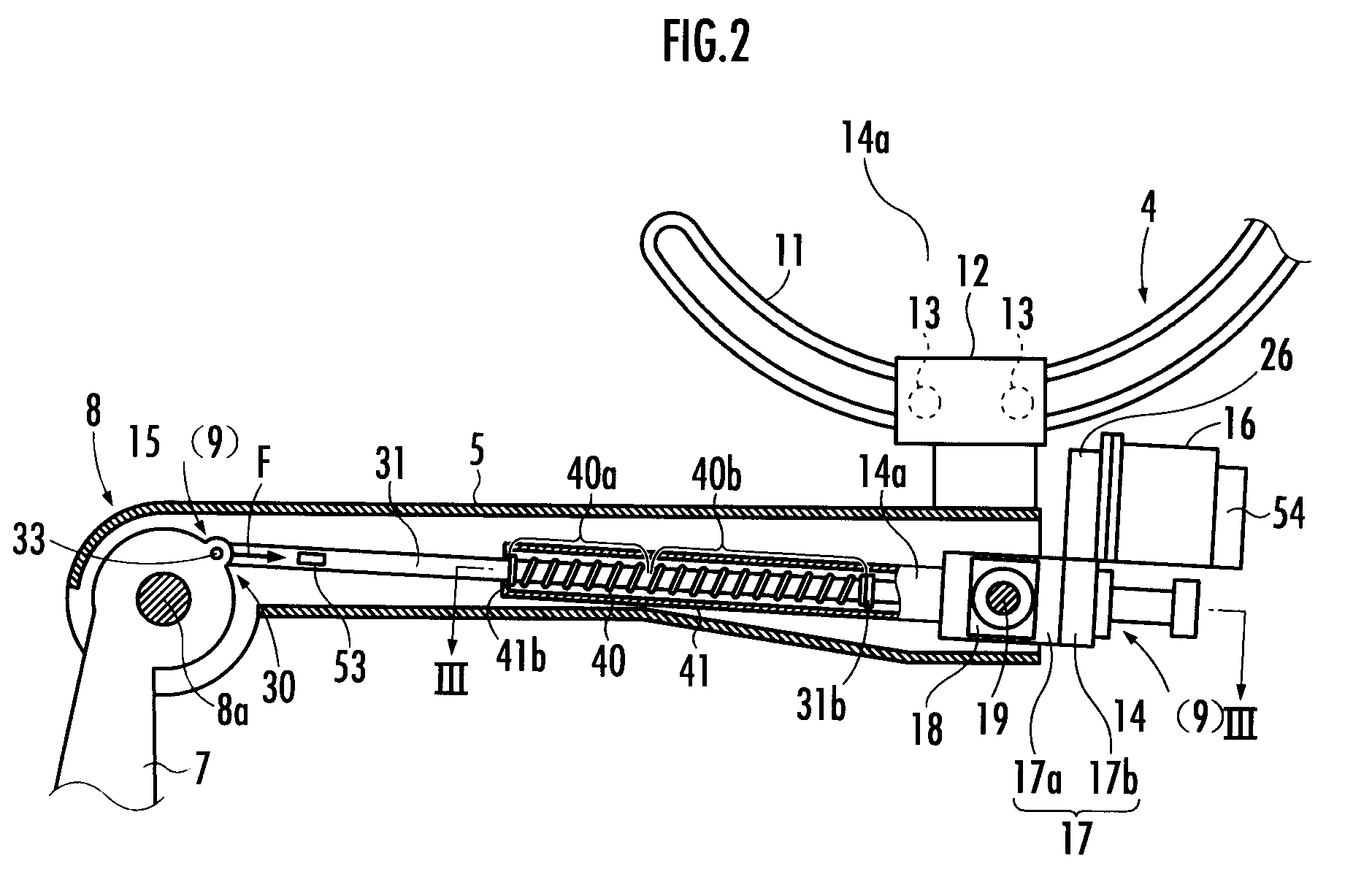Walking assistance device and controller for the same
a technology of assistance device and controller, which is applied in the field of walking assistance, can solve the problems of increasing the load to be applied to the user from the load transmitting portion, increasing the size, and free falling damage to the joints or the like of the leg links
- Summary
- Abstract
- Description
- Claims
- Application Information
AI Technical Summary
Benefits of technology
Problems solved by technology
Method used
Image
Examples
first embodiment
[0049]A first embodiment of the walking assistance device in accordance with the present invention will be described with reference to FIG. 1 to FIG. 13.
[0050]As illustrated in FIG. 1, a walking assistance device A according to the present embodiment is provided with a seating portion 1 serving as a load transmit portion, a pair of right and left foot-worn portions 2 and 2 to be attached to the feet of individual legs of a user (not shown), and a pair of right and left leg links 3 and 3 which connect the foot-worn portions 2 and 2, respectively, to the seating portion 1. The right and left foot-worn portions 2 and 2 are laterally symmetrical to each other and share the same structure. The right and left leg links 3 and 3 are also laterally symmetrical to each other and share the same structure. In the description of the present embodiment, the lateral direction of the walking assistance device A means the lateral direction of the user having the foot-worn portions 2 and 2 attached t...
second embodiment
[0228]A second embodiment of the present invention will now be described with reference to FIG. 14 and FIG. 15. The present embodiment differs from the first embodiment only in the construction related to the elastic member, so that the description will be focused on the different aspect. The like functional parts as those of the first embodiment will be assigned the like reference numerals as those in the first embodiment and the descriptions thereof will be omitted.
[0229]In the first embodiment, the spring constant of the coil spring 40 functioning as the elastic member (the change rate of the spring force in response to a change in the compression amount (elastic deformation amount) of the coil spring 40) has been fixed. In contrast thereto, the coil spring 40 as an elastic member in the present embodiment is constructed such that the spring constant thereof changes in two steps according to the compression amount of the coil spring 40.
[0230]More specifically, referring to FIG. 2...
third embodiment
[0245]A third embodiment of the present invention will now be described with reference to FIG. 16 and FIG. 17. The present embodiment differs from the second embodiment only in the characteristic related to the elastic member, so that the description will be focused on the different aspect. The like functional parts as those of the second embodiment will be assigned the like reference numerals as those in the second embodiment and the descriptions thereof will be omitted.
[0246]In the present embodiment, the coil spring 40 of each of toe leg links 3 has a low-spring-constant portion 40a and a high-spring-constant portion 40b, which have different spring constants, as with the second embodiment. Hence, the spring constant of the coil spring 40 changes in two steps according to the compression amount of the coil spring 40. The coil spring 40 is installed to an upper link member 5 of each of the leg links 3 in the same manner as that in the first embodiment and the second embodiment. Th...
PUM
 Login to View More
Login to View More Abstract
Description
Claims
Application Information
 Login to View More
Login to View More - Generate Ideas
- Intellectual Property
- Life Sciences
- Materials
- Tech Scout
- Unparalleled Data Quality
- Higher Quality Content
- 60% Fewer Hallucinations
Browse by: Latest US Patents, China's latest patents, Technical Efficacy Thesaurus, Application Domain, Technology Topic, Popular Technical Reports.
© 2025 PatSnap. All rights reserved.Legal|Privacy policy|Modern Slavery Act Transparency Statement|Sitemap|About US| Contact US: help@patsnap.com



